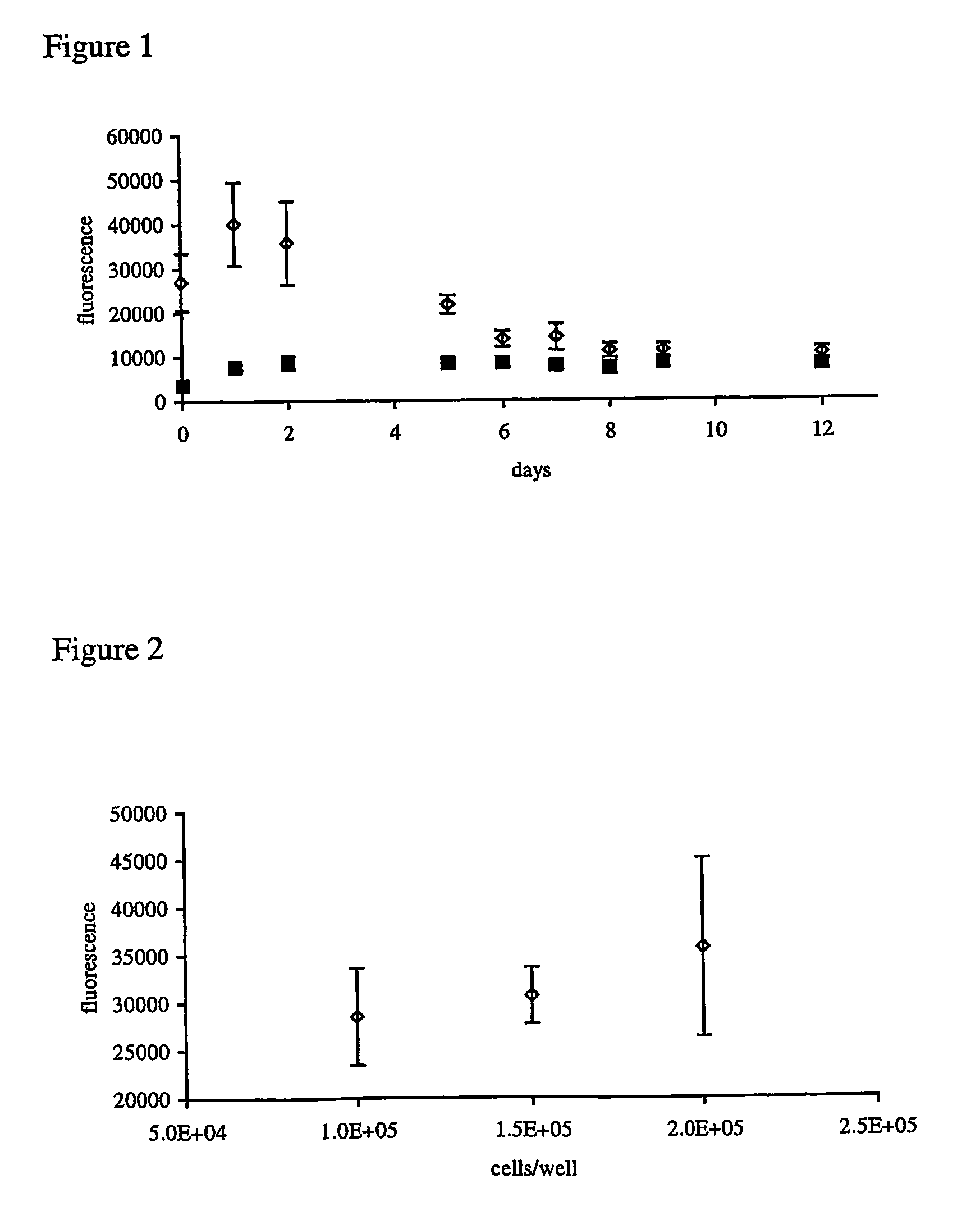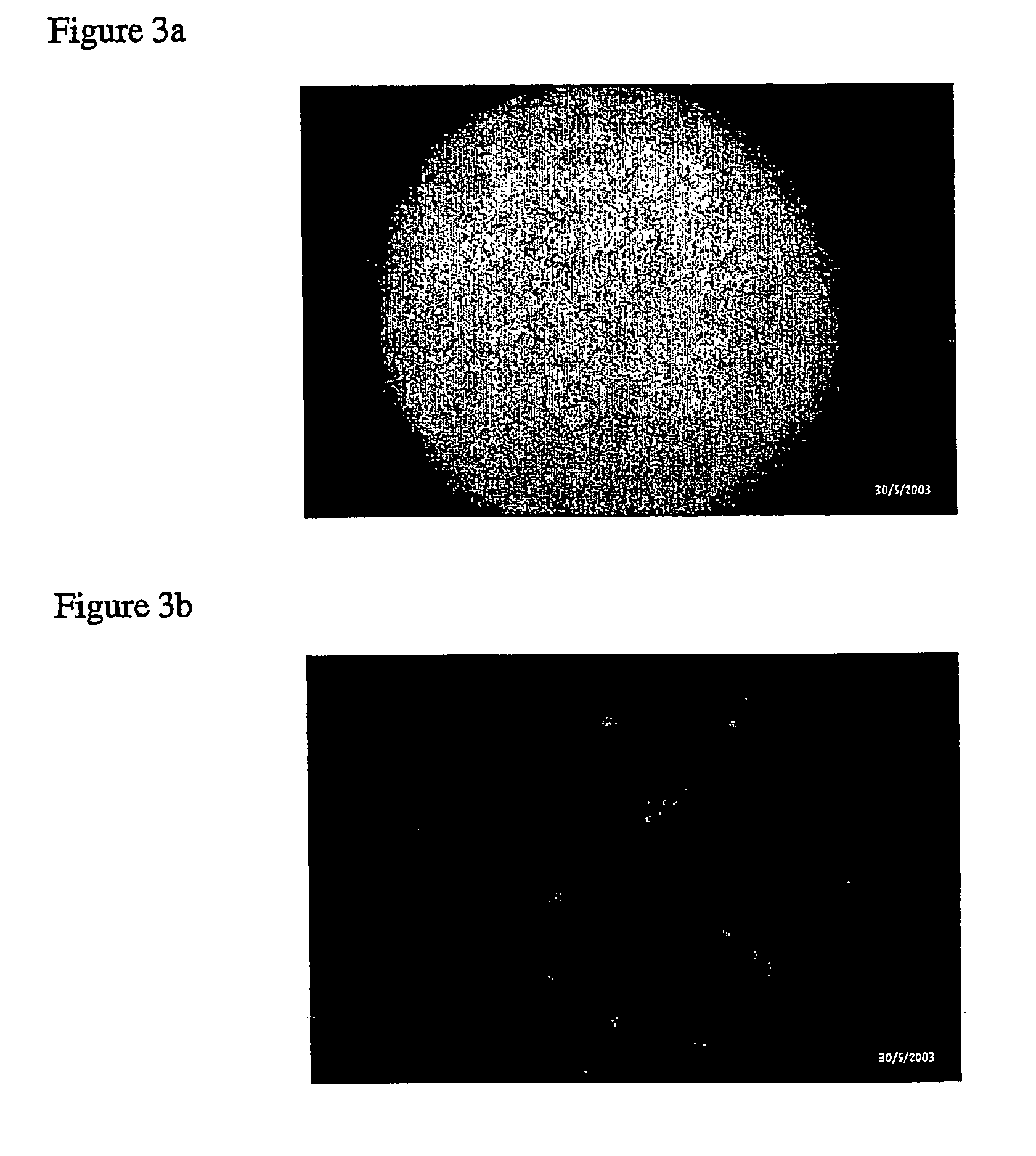In vitro screening of cellular events using 3d cell culture systems
a cell culture system and in vitro technology, applied in the field of in vitro cell culture conditions, can solve the problems of limited common use, limited application, and limited common use, and achieve reliable and accurate read-outs.
- Summary
- Abstract
- Description
- Claims
- Application Information
AI Technical Summary
Benefits of technology
Problems solved by technology
Method used
Image
Examples
example 1
[0106] 3D Micro Cell Culture Models Mimicking a Cartilage Tissue-Like Environment
[0107] Useful for 3D culture conditions that can be downscaled to e.g. 96 or 384-well format, suitable for e.g. high throughput screening applications or to be applied as a quality control tool within cell-based therapies.
[0108] Cell Isolation and Propagation
[0109] Articular cartilage was harvested from healthy young (6 months) pigs or human donors (age 56 and 79 years). Minced cartilage pieces were digested with 0.025% (weight / volume) collagenase and 0.015% (weight / volume) pronase in DMEM / F-12 containing 5% fetal calf serum (FCS), 73 μg / ml ascorbic acid, 100 IU / 100 μg / ml penicillin / streptomycin, 1 μg / ml insulin, 50 μg / ml gentamycin, 1.5 μg / ml amphotericin B, 2.5% Hepes buffer for 16 hours at 37° C. in 5% CO2. Isolated chondrocytes were spun, resuspended in complete medium, counted and plated at a density of 5×106 cells per cm2. Cells were routinely passaged at confluence (every 5-7 days). Proliferat...
example 2
[0133] Useful for the automated production of 3D micro cell cultures that can be used to study promoter-reporter events in biological relevant tissue-like environment using high throughput screening applications.
[0134] A suitable cell line, e.g. primary chondrocytes is expanded until the number of required cells is obtained. Cells are transfected using one of the methods described in example 1 with the promoter-reporter construct of interest, e.g. GFP under the control of COL2. Transfected cells are detached and put in a downscaled version of any of the 3D tissue-like culture systems described in example 1 using a pipeting robot. The cell solution is e.g. mixed in a ratio 1:1 with 2% agarose at a temperature of 45° C. and pipeted into a 384-well plate. For polymerization the plate is incubated for 10 minutes at 4° C. Subsequently, the plate is cultivated under standard differentiating culture conditions as described in example 1. Factors or components of the extracellular matrix, w...
example 3
[0137] Clinical Quality Control Tool for the Assessment of Cell-Based Therapies
[0138] Useful e.g. as quality control and diagnostic tool for cell cultures used within cell-based therapies, like e.g. autologous chondrocyte transplantation (ACT) or quality assurance of in vitro engineered constructs.
[0139] a) Human cells derived from a patient's tissue, e.g. cartilage are expanded and treated according to the cell-based therapy used. An aliquot of said cells is taken to gain knowledge about e.g. chondrogenic potential, i.e. re-differentiation of chondrocytes or the necessity of additional treatment. Cells of the taken aliquot are then transfected with one of the methods described in example 1 with a key marker promoter-reporter construct, e.g. COL2-GFP to monitor redifferentiation in chondrocytes, and are cultivated in the appropriate 3D micro tissue-like culture system. From grown constructs chondrogenic potential is assessed measuring GFP expression intensity using a standard fluo...
PUM
| Property | Measurement | Unit |
|---|---|---|
| temperature | aaaaa | aaaaa |
| time | aaaaa | aaaaa |
| cellular density | aaaaa | aaaaa |
Abstract
Description
Claims
Application Information
 Login to View More
Login to View More - R&D
- Intellectual Property
- Life Sciences
- Materials
- Tech Scout
- Unparalleled Data Quality
- Higher Quality Content
- 60% Fewer Hallucinations
Browse by: Latest US Patents, China's latest patents, Technical Efficacy Thesaurus, Application Domain, Technology Topic, Popular Technical Reports.
© 2025 PatSnap. All rights reserved.Legal|Privacy policy|Modern Slavery Act Transparency Statement|Sitemap|About US| Contact US: help@patsnap.com



